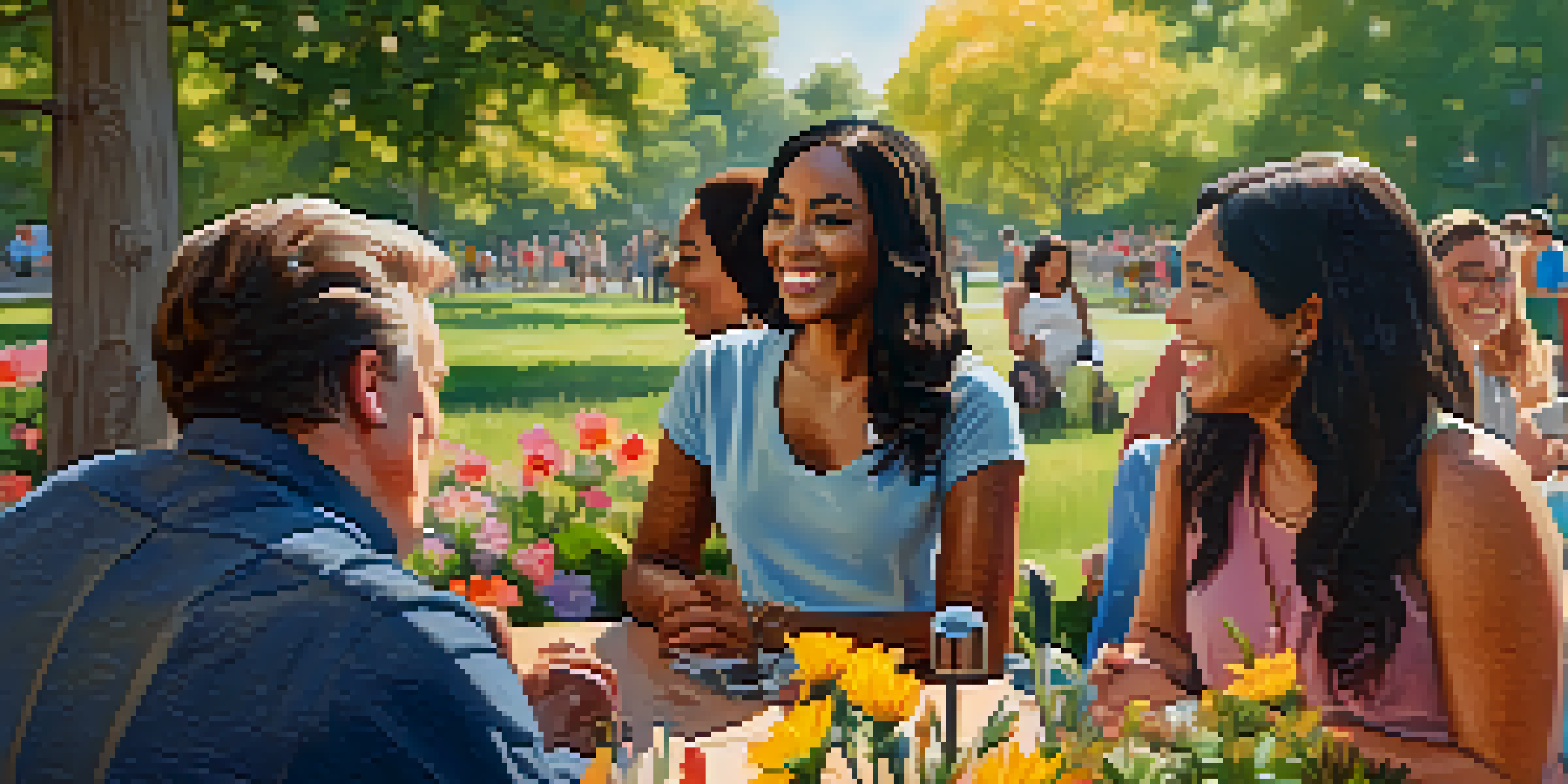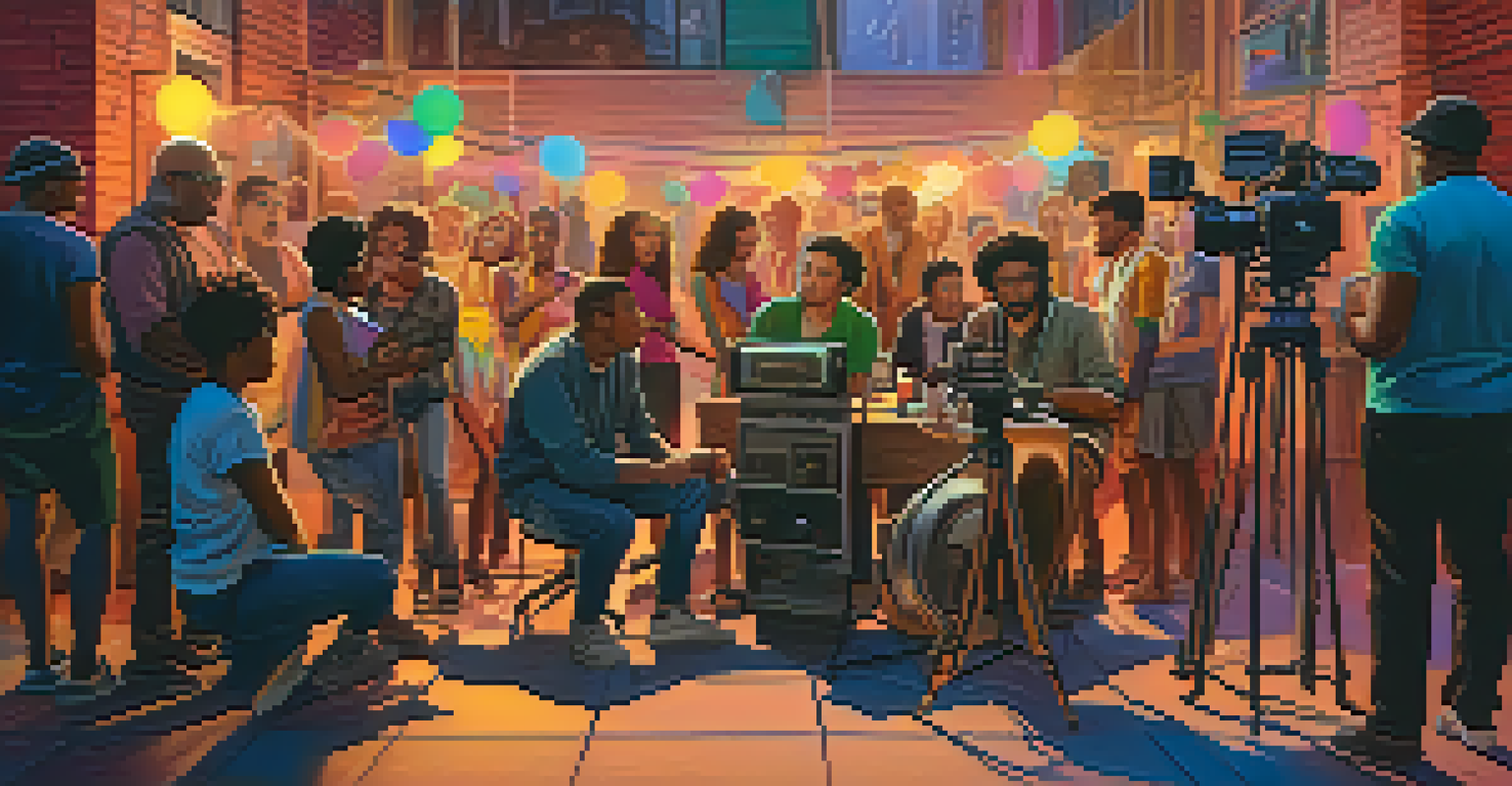Cinematic Bodies: The Representation of Bodies in Film

The Importance of Body Representation in Film
Body representation in film plays a crucial role in shaping societal norms and perceptions. When we watch a movie, the bodies we see on screen often reflect cultural ideals of beauty, strength, and identity. This representation can influence how audiences view themselves and others, making it essential to analyze the messages conveyed through these portrayals.
The power of representation is that it can make us feel seen, understood, and connected to one another.
In many cases, films have the power to challenge traditional notions of body image. For instance, movies that feature diverse body types and representations can promote inclusivity, encouraging viewers to embrace their uniqueness. This shift can foster a healthier dialogue around body positivity and acceptance in society.
Moreover, the way bodies are depicted in film can also highlight issues of power and agency. Characters portrayed with agency often embody strength and confidence, while those depicted as passive or objectified may reinforce harmful stereotypes. Thus, understanding these dynamics helps us grasp the broader implications of body representation in the cinematic landscape.
Historical Perspectives on Body Representation
Historically, film has often reflected and reinforced societal attitudes towards bodies. Early cinema, for example, showcased a narrow definition of beauty, primarily favoring Eurocentric features. This limited representation set a precedent that would influence countless films and the industry as a whole, perpetuating unrealistic standards for decades.

As film evolved, so did the representation of bodies. Movements such as the feminist film movement in the 1970s began to challenge these norms, advocating for authentic portrayals of women's bodies and experiences. This shift not only changed how women were viewed in film but also opened doors for discussions around gender and body image.
In recent years, there has been a noticeable push towards more inclusive representations in mainstream cinema. Films featuring LGBTQ+ characters, people with disabilities, and varied ethnic backgrounds have gained popularity, reflecting a broader spectrum of human experience. This evolution in representation is vital for fostering empathy and understanding across diverse audiences.
The Role of Gender in Body Representation
Gender plays a significant role in how bodies are represented in film. Traditionally, women have been subjected to objectification and unrealistic beauty standards, often reduced to mere visual spectacles. This portrayal can have detrimental effects on viewers' self-esteem and body image, reinforcing harmful stereotypes about femininity.
Cinema is a mirror by which we often see ourselves; it reflects our culture, our values, and our beliefs.
Conversely, male bodies in film have historically been associated with power, strength, and dominance. Action heroes, for example, often embody hyper-masculinity, setting unattainable standards for men. This binary representation can limit the understanding of masculinity, neglecting the complexities of male identity and emotional vulnerability.
However, recent films are beginning to challenge these conventional portrayals, offering more nuanced representations of both genders. Characters who defy stereotypes and embrace their individuality can empower audiences, prompting conversations about gender roles and expectations. This shift is essential for promoting a more balanced and realistic depiction of bodies in cinema.
Cultural Influences on Body Representation
Cultural backgrounds significantly influence how bodies are represented in film. Different cultures have unique ideals of beauty, which can be seen in their cinematic portrayals. For instance, Bollywood films often celebrate curvaceous bodies, contrasting sharply with Western films that may emphasize slimmer figures.
These cultural differences highlight the importance of context when analyzing body representation. What may be deemed beautiful in one culture could be viewed differently in another, illustrating the fluidity of beauty standards. Understanding these variances helps audiences appreciate the richness of global cinema and its diverse portrayals of bodies.
Moreover, cultural representations in film can serve as a mirror reflecting societal values and beliefs. By examining how different cultures depict bodies, we gain insight into their priorities and the messages they convey. This exploration can foster cross-cultural understanding and appreciation, enriching the cinematic experience.
The Impact of Social Media on Body Representation
In today’s digital age, social media has become a powerful tool influencing body representation in film. Platforms like Instagram and TikTok allow for the rapid dissemination of images and ideas, shaping public perceptions of beauty and body image. As a result, filmmakers are increasingly aware of these trends when crafting their narratives and visual styles.
Social media has also given rise to movements advocating for body positivity and diversity. Campaigns promoting self-love and acceptance have gained traction, encouraging filmmakers to portray a wider array of body types. This shift has led to more authentic representations in film, challenging traditional standards and inspiring audiences to embrace their bodies.
However, the relationship between social media and body representation is complex. While it can promote diversity, it can also perpetuate unrealistic standards through filters and curated content. Thus, understanding this duality is essential for both filmmakers and audiences as they navigate the evolving landscape of body representation in cinema.
The Future of Body Representation in Film
As we look to the future, the landscape of body representation in film is poised for further transformation. With growing awareness around issues of diversity and inclusion, filmmakers have an opportunity to tell stories that reflect a broader spectrum of human experiences. This can lead to more authentic narratives that resonate with audiences on a deeper level.
Emerging filmmakers from diverse backgrounds are challenging the status quo, bringing fresh perspectives to the industry. By sharing their unique stories and experiences, they can redefine what bodies look like on screen. This shift not only enriches the cinematic landscape but also serves to inspire future generations of storytellers.
Ultimately, the future of body representation in film hinges on a commitment to diversity and authenticity. As audiences demand more varied portrayals, filmmakers must rise to the occasion, creating films that reflect the richness of human experience. By doing so, they can foster a more inclusive and compassionate cinematic world.
Conclusion: The Power of Bodies in Film
In conclusion, the representation of bodies in film holds significant power in shaping societal perceptions and ideals. From historical portrayals to modern inclusivity, the evolution of body representation reflects broader cultural shifts. Understanding these dynamics is essential for both filmmakers and audiences as they navigate the complexities of identity and beauty.
As film continues to evolve, it is vital to challenge traditional norms and advocate for diverse representations. By doing so, we can create a more inclusive cinematic landscape that empowers all individuals to see themselves reflected on screen. This not only enriches storytelling but also promotes a healthier dialogue around body image in society.

Ultimately, the power of bodies in film lies in their ability to connect with audiences and foster empathy. By embracing diverse representations, we can celebrate the beauty of individuality and inspire a collective movement towards acceptance and understanding in both cinema and life.